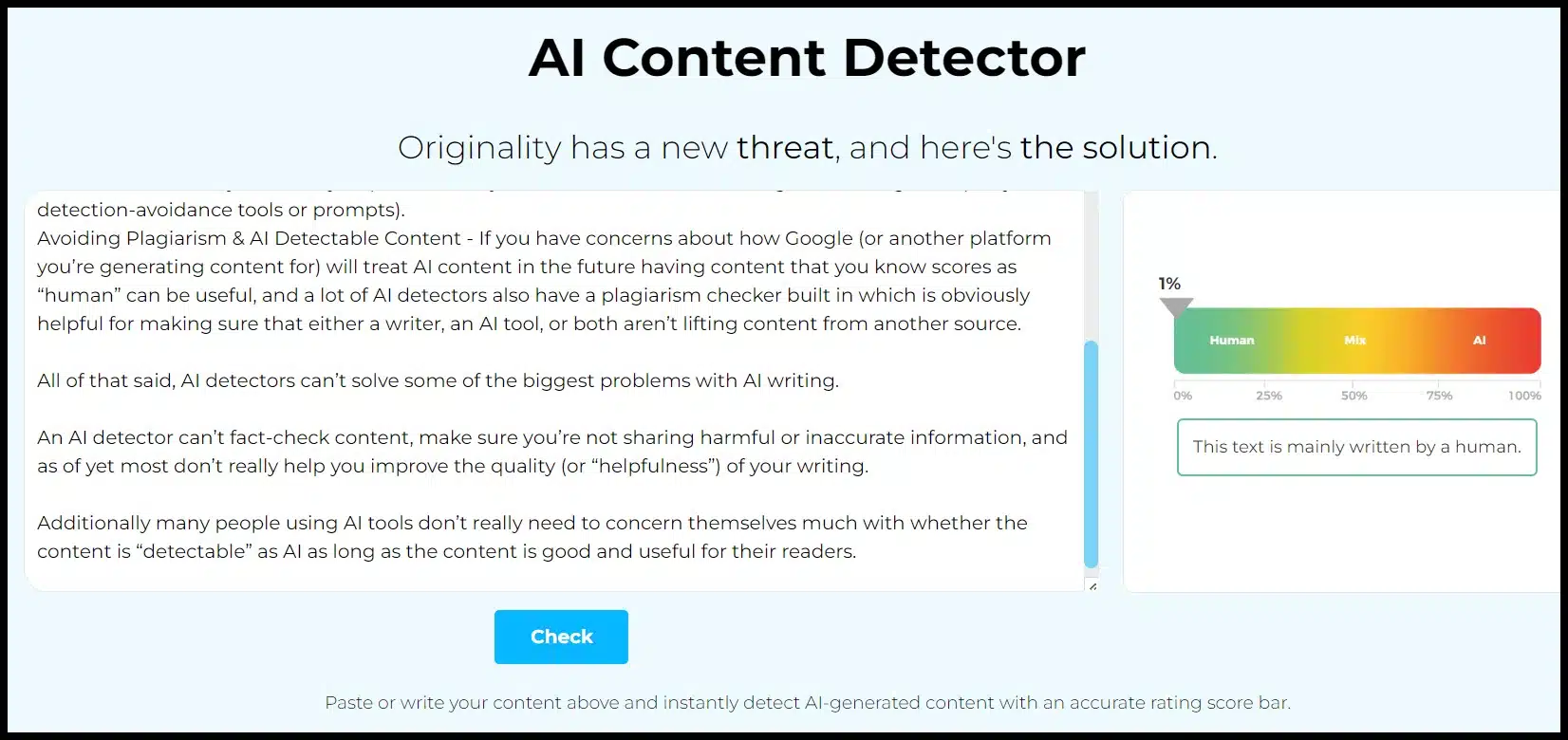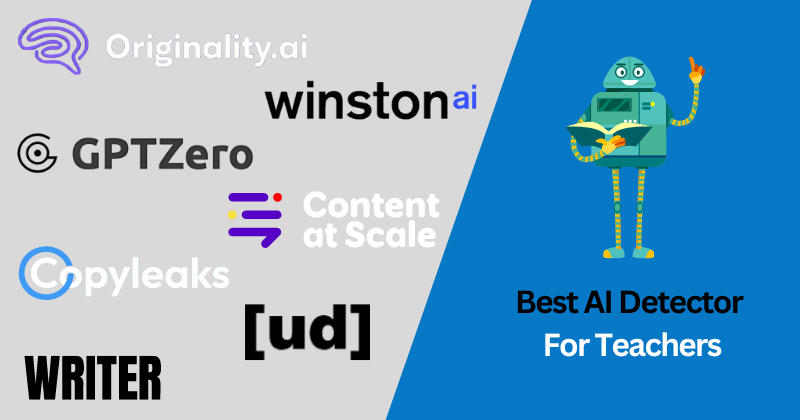Comprehending the Relevance of an Ai Detector in Today's Digital Landscape
As artificial knowledge proceeds to permeate different elements of web content production, distinguishing in between human-generated and machine-generated material has ended up being progressively intricate. These tools not just help in identifying AI-produced content however likewise maintain the honesty of details circulation.
The Rise of AI Content

The rise of AI-generated web content has substantial ramifications for numerous industries, including journalism, marketing, and home entertainment - ai detector. Organizations are increasingly using these innovations to enhance efficiency, personalize web content, and involve target markets extra successfully. The capability to analyze vast datasets allows AI systems to customize content to satisfy particular user preferences, supplying an extra customized experience
However, the expansion of AI material likewise elevates important factors to consider for web content creators and consumers alike. As AI ends up being a lot more incorporated right into material manufacturing operations, comprehending the subtleties of AI-generated product is necessary for maintaining quality and relevance in a quickly progressing electronic environment. Welcoming this technological innovation while remaining alert concerning its implications is important for stakeholders in the digital media landscape.
Challenges of Authenticity
The introduction of AI-generated web content has introduced considerable obstacles pertaining to authenticity in digital media. As algorithms end up being a lot more sophisticated, differentiating in between human-created and machine-generated content ends up being progressively tough. This obscuring of lines elevates problems concerning the trustworthiness of details and the possibility for false information to multiply.
Among the key difficulties is the disintegration of trust among customers. With AI with the ability of generating practical text, images, and videos, individuals might discover it challenging to discern genuine resources from deceptive ones. This hesitation can bring about a more comprehensive mistrust of all digital content, making complex initiatives to recognize reputable details.
Additionally, the effects for intellectual building are substantial. As AI devices generate content based upon existing works, questions regarding possession and originality occur. Web content designers may have a hard time to safeguard their work from anonymous AI reproductions, undermining their incomes and legal rights.
Finally, the capacity for harmful uses of AI-generated material, such as deepfakes and automatic propaganda, positions serious honest and societal risks. These difficulties highlight the urgent need for structures that copyright credibility in the digital landscape, making certain that info continues to be trustworthy and trustworthy.
Role of AI Detectors
Attending to the challenges of credibility in digital media calls for ingenious remedies, and AI detectors have become a crucial device in this initiative. These technologies are developed to examine and recognize content generated by man-made knowledge, thereby helping with the discernment between machine-generated and human-created products. The duty of AI detectors extends beyond mere identification; they likewise add to keeping the honesty of information consumed by the public.
AI detectors utilize sophisticated formulas to inspect numerous components of digital content, including linguistic patterns, structural anomalies, and specific markers that indicate automation. Their application extends multiple sectors, including journalism, education, and social media, where the existence of AI-generated web content can bring about false information and disintegration of depend on.

Benefits of Making Use Of AI Detectors
Making sure authenticity in electronic content personifies the essential demand for count on in information sources, and AI detectors act as a powerful ally in this quest. By identifying AI-generated index material, these devices assist keep the honesty of details, therefore safeguarding customers from misinformation and improving overall material top quality.
One of the main advantages of using AI detectors is their capability to streamline material verification procedures, significantly decreasing the moment and effort required to analyze the credibility of electronic materials. This efficiency allows material designers, educators, and companies to concentrate on creating reliable and premium details, as opposed to spending excessive resources on fact-checking.
Additionally, AI detectors foster liability amongst content developers. The understanding that AI-generated web content can be recognized encourages transparency and ethical practices in material production. This, consequently, contributes to a more informed electronic area, as individuals can confidently involve with validated info.
Future of Material Verification
As the landscape of electronic web content continues to develop, the future of content he said confirmation presents both challenges and chances for preserving authenticity. As AI innovations development, so too do the techniques for developing and distributing false information (ai detector). This arms race between content developers and confirmation tools requires the advancement of much more sophisticated AI detectors with the ability of critical real web content from controlled or produced material
Additionally, the rise of decentralized technologies, such as blockchain, holds assurance for verifying material provenance, guaranteeing that customers can trace the beginnings of the information they consume. Eventually, the future of web content confirmation will rest on our ability to innovate despite developing risks, cultivating a digital setting where authenticity is acknowledged and promoted as a basic principle.
Final Thought
In conclusion, the proliferation of AI-generated material requires robust mechanisms for authenticity verification. The future of content verification hinges on the effectiveness of AI detectors in maintaining reliability across various media platforms.
AI web content production tools, such as all-natural language processing models and generative adversarial networks, make it possible for people and services to create premium material at unprecedented speeds and reduced prices.
Nevertheless, the proliferation of AI web content additionally raises essential considerations for material designers and customers alike. As the sophistication of AI-generated material proceeds to advance, the function of AI detectors ends up being increasingly essential in securing authenticity and advertising openness in digital interaction. The understanding that AI-generated content can be recognized motivates transparency and moral practices in material manufacturing.As the landscape of electronic material proceeds to progress, the future of content confirmation challenges both offers and chances for preserving credibility.